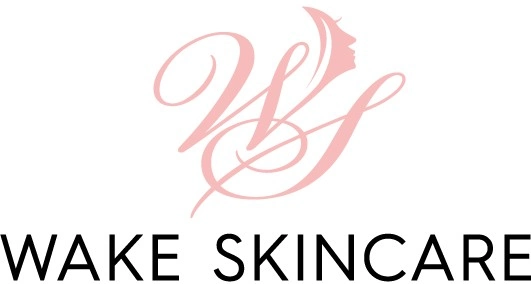Summary:
What Happens During Your Chemical Peel Treatment
The actual chemical peel process is surprisingly straightforward. We’ll first analyze your skin and discuss your needs, then cleanse your skin to remove oil and impurities before carefully applying the chemical solution for a specific time, followed by neutralization and detailed aftercare instructions.
The procedure typically takes around 20 minutes depending on the type of peel and number of layers applied, during which you might experience mild tingling, itching and heating sensations that are completely normal and temporary. Most people describe the sensation as similar to a light sunburn – noticeable but manageable.
The First 24 Hours After Your Chemical Peel
Right after your treatment, your skin will likely look and feel like you’ve spent a little too much time in the sun. Your skin might appear red and feel sensitive, similar to a sunburn, which is a normal response to the treatment, and you might also notice some tightness and mild swelling.
For the first 6 hours, avoid touching your skin completely, and if you experience any discomfort, consider applying a cold compress for relief. This isn’t the time to examine your skin closely in the mirror or worry about immediate results – your skin is just beginning its renewal process.
Follow our aftercare instructions closely, avoid touching or irritating your skin, and use only gentle skincare products while avoiding any that contain strong active ingredients. Think of this as your skin’s recovery day – keep things simple and let the treatment do its work.
Days 2-4: When the Real Changes Begin
During the second day, your skin may still appear red and feel dry and tight, so apply moisturizer whenever your skin feels overly tight, follow recommended guidelines for washing with lukewarm water, and remember to apply SPF consistently.
Your skin’s sensitivity may increase during these days, and you might experience a slight burning or stinging sensation, especially when applying products or washing your face, with peeling usually beginning around day three as your skin appears dry and flaky. You can expect skin flaking to commence around the mouth area and gradually extend outward towards your jawline and hairline.
This is actually the exciting part – that flaking skin is revealing the fresh, new skin underneath. Expect ongoing flaking, possibly intensified with larger flakes shedding, but resist the urge to pick at them while maintaining skin cleanliness and hydration along with SPF application. Your patience during these few days directly impacts your final results.
Chemical Peel Recovery Timeline and Aftercare
The chemical peel recovery process varies based on the type of peel you receive – lighter peels require around one week for flaking and peeling to subside, while medium to deep peels might take up to two weeks for swelling to decrease, although redness could persist for up to three months.
Anticipate peeling to persist for 2-5 days from the onset of flaking, with your chemical peel recovery concluding by the end of the second week, so continue with your aftercare regimen until peeling subsides entirely. The timeline isn’t just about waiting – it’s about proper care that ensures the best possible outcome.
Essential Aftercare Steps for Optimal Results
Moisturizing often is crucial since letting the skin dry out may cause discomfort, and using non-comedogenic moisturizers like Aveeno, Vanicream, Cetaphil, or CeraVe until the skin feels back to normal will promote the healing process by locking in moisture and reducing the chance of bacterial infection, redness, and irritation.
You must avoid direct sun exposure for at least 6 weeks following your chemical peel, stick to cleansers and makeup that do not contain harsh chemicals, and cleanse your skin with cool water whenever your face feels uncomfortable and tender – but never pick at your skin until you have healed.
Do not use any acidic products such as retinoids, acne medications like Retin-A, AHAs, BHAs, benzoyl peroxide, vitamin C products, lightening agents, or any exfoliative products for 2 weeks after your chemical peel, as these medications and products increase your photosensitivity and can significantly increase the likelihood of complications. This temporary restriction protects your investment in healthier skin.
When You'll See Your Final Results
Once flaking ceases, you can resume your regular routine and maintain SPF application while makeup can now be applied to your face, and after shedding all the dead skin, you’ll revel in a smoother, more even-toned, radiant complexion with enhanced texture.
Once all of your dead skin has shed, you will enjoy a smoother, even-toned, glowing complexion with improved texture, and by following your recovery guidelines and understanding what to expect, you can enjoy these fantastic benefits and achieve smoother, more radiant skin. Most patients can start to see smooth, glowing skin in about 2-5 days after treatment, and while there isn’t much downtime involved with a light peel, treatments may need to be repeated to achieve your desired outcome.
If you crave even more noticeable results, consider another peel, and at this stage, feel free to engage in all activities, including swimming, rigorous exercise, and returning to your regular skincare routine. The transformation isn’t just about how your skin looks – it’s about how confident you feel in your own skin.
Your Chemical Peel Journey in Wake County, NC
Understanding what to expect during and after your chemical peel treatment removes the guesswork and helps you prepare for the best possible results. The process requires patience, proper aftercare, and realistic expectations, but the payoff is healthier, more radiant skin that reflects how you feel inside.
By following proper aftercare tips, you can improve your chemical peel recovery and enjoy the full benefits of your treatment, as patience and proper care are your best allies in achieving healthy, glowing skin. Remember, every day of careful aftercare is an investment in your long-term skin health and appearance.
If you’re ready to experience the transformative benefits of professional chemical peels with expert guidance every step of the way, we provide the personalized care and proven expertise that Wake County residents trust for their most important skincare goals.




